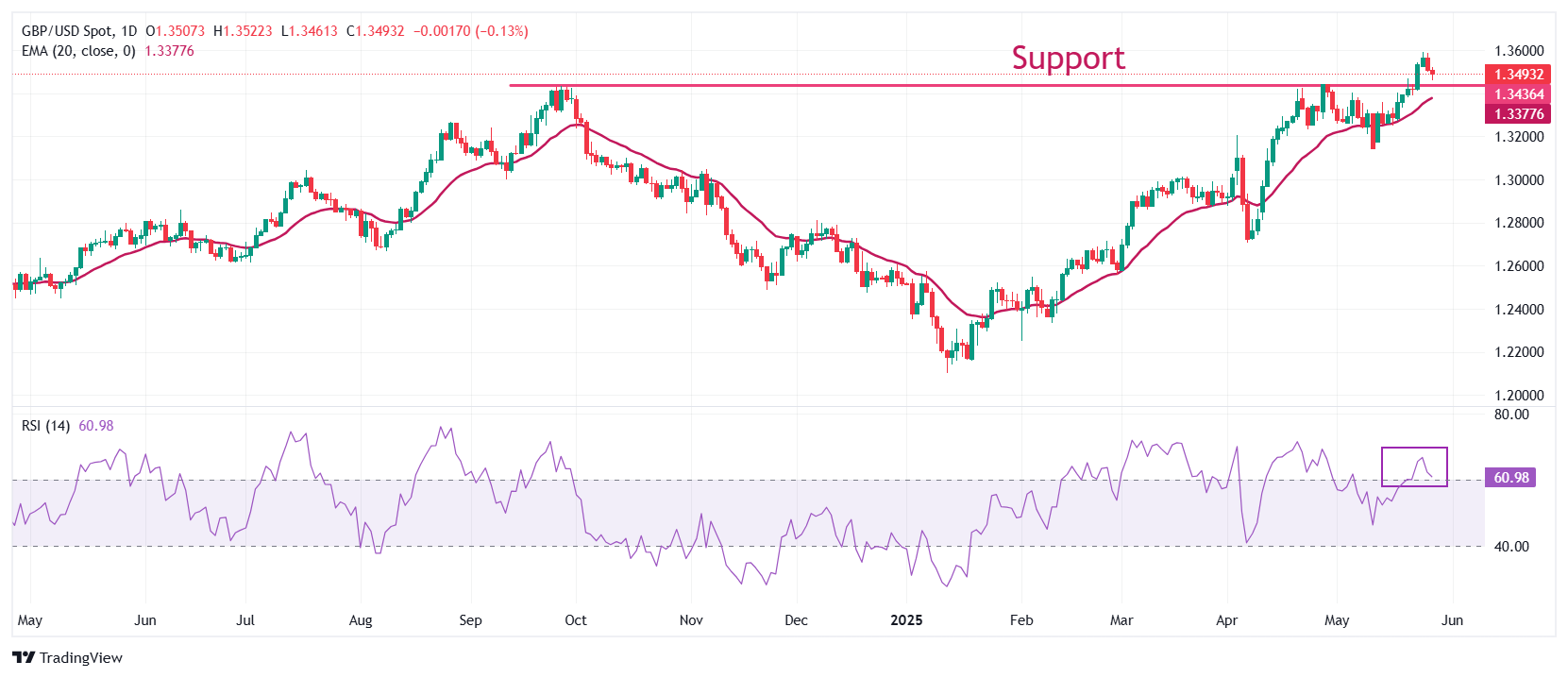The Pound Sterling (GBP) regained lost ground against the US Dollar (USD) during European trading hours on Wednesday, recovering to around 1.3460 after earlier dipping. The GBP/USD pair bounced back as the US Dollar surrendered some of its initial gains despite strong hopes for an imminent US-EU trade agreement.
The US Dollar Index (DXY), which measures the Greenback’s strength against six major currencies, slipped back to about 99.50 from an intraday high of 99.85.
On Tuesday, US President Donald Trump expressed optimism on Truth.Social about the EU’s renewed efforts to finalize a bilateral trade deal. “I was extremely satisfied with the 50% tariff allotment on the European Union, especially since they were ‘slow walking’. I have just been informed that the EU has called to quickly establish meeting dates. This is a positive event, and I hope that they will,” Trump wrote.
Growing confidence over the US-EU trade negotiations helped the US Dollar recover nearly all losses sustained last Friday when President Trump threatened a flat 50% tariff on EU imports.
Another factor supporting the US Dollar’s recent strength was the upbeat US Consumer Confidence data for May, released Tuesday. The index surged to 98.0 after five consecutive months of decline, with the Conference Board noting that easing US-China trade tensions played a significant role in boosting consumer sentiment.
Daily Digest Market Movers: Pound Sterling Recovers Against Most Peers
- The Pound Sterling bounced back against most major currencies—except the New Zealand Dollar (NZD)—during European trading hours on Wednesday. The rebound comes as investors look for fresh signals on whether the Bank of England (BoE) will implement further interest rate cuts at its June policy meeting.
- Earlier this month, the BoE lowered borrowing costs by 25 basis points to 4.25%, with a 7-2 vote split, signaling a “gradual and cautious” approach to future rate reductions. Strong UK economic data, including April’s Consumer Price Index (CPI), Retail Sales, and upbeat Q1 Gross Domestic Product (GDP) figures, have tempered expectations for additional easing.
- Specifically, UK service inflation accelerated sharply to 5.4% year-over-year in April, up from 4.7% in March. Meanwhile, Retail Sales rose a robust 1.2% month-on-month, significantly higher than March’s 0.1% gain. UK economic growth also surged to 0.7% in Q1, well above the 0.1% recorded in the final quarter of 2024.
- Reflecting this positive momentum, the International Monetary Fund (IMF) recently upgraded its UK GDP growth forecast for 2025 to 1.2%, up from the earlier 1.1%, citing strong performance in the first quarter.
- Looking ahead, investors will closely watch the Personal Consumption Expenditure (PCE) Price Index data for April, due Friday. However, this inflation report is unlikely to shift market expectations for the Federal Reserve’s monetary policy, as officials are expected to hold rates steady while assessing new economic policies under President Trump and their potential impact on the economy.
Technical Analysis: Pound Sterling Recovers from 1.3460

The Pound Sterling bounced back to near 1.3500 from an intraday low of 1.3460 against the US Dollar on Wednesday. The pair’s outlook remains positive, supported by the 20-day Exponential Moving Average (EMA), which is trending upward around 1.3380.
The 14-day Relative Strength Index (RSI) stays above 60.00, indicating that bullish momentum is still strong.
On the upside, the January 2022 high at 1.3750 poses a key resistance level. On the downside, the 20-day EMA will serve as an important support zone.





